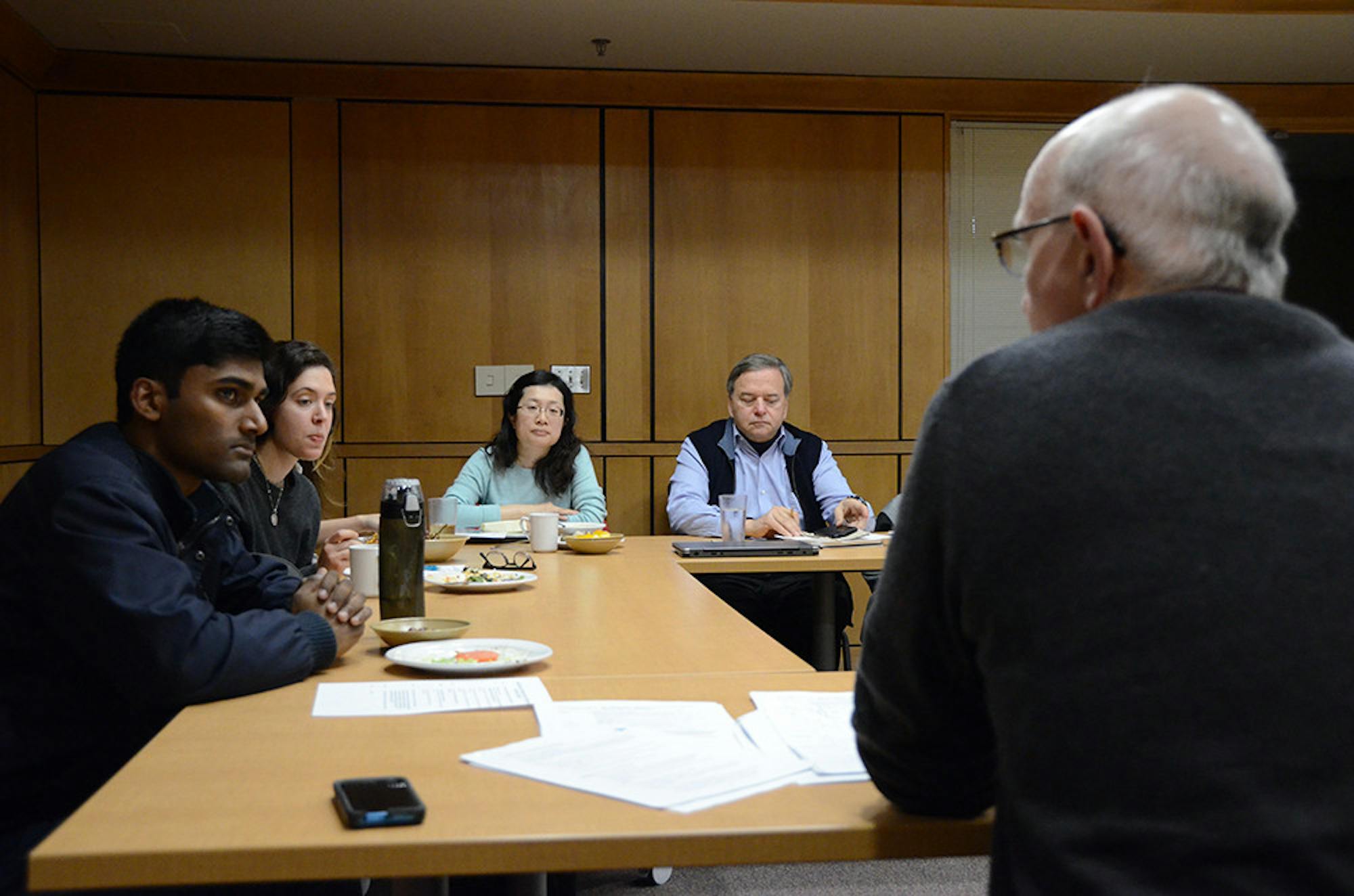A roundtable discussion entitled “The Opioid Epidemic: What Happens Next and Who Will Decide?” was held yesterday in the conference room of the Dewick-MacPhie Dining Center, as part of the Jonathan M. Tisch College of Civic Life's Civic Science Roundtable series.
15 people reserved a spot at the event and seven people attended, according to Jonathan Garlick, the event's organizer and a professor of oral pathology.
Garlick told the Daily that the overall goal of the Civic Science Roundtable series was to bring together students of different backgrounds and to provide them with the space and structure they need to discuss divisive issues relating to science.
“The series was created to give people the space they need to talk to each other … about polarizing issues in our society,” Garlick said. “[Our goal] is to build bridges across these issues and expand our perspective.”
While introducing the event, Garlick said that the roundtable series also relies on having a scientific expert at the event with whom to consult when questions arise.
“Science is complex, science is uncertain and science is divisive,” he said. “[So] we have an … expert in the room who can share their knowledge.”
Garlick then introduced Daniel Carr, a professor of public health and community medicine at the Tufts School of Medicine, who served as the event’s science expert.
Carr began his remarks by briefly explaining the history of opioid use in the United States. He said that different factors led to a dramatic increase in the number of opioid abuse cases. In particular, between the late 1970s and the early 1990s, there was widespread liberalization of opioid use by almost all players in the health care system, an increased value placed on profit motives and a constant desire among patients to avoid pain.
Carr also said that, more recently, new opioids have entered the market causing a spike in opioid abuse and a second epidemic. He said that a combination of all of these factors from the 1970s to now has caused the number of people suffering from opioid addiction to reach staggering levels.
Carr added that 25 to 30 percent of the American population knows someone who has had an opioid-related problem.
“This crisis of untreated pain and overdose is [now] the paramount conversation of today,” he said.
Despite the fact that much of United States is suffering from this epidemic, politicians have still not come up with a way to address the problem nationally, Carr said.
“What has happened is that there has been a torrent of comments from every individual stakeholder,” he said. “[Yet] there’s no argument that the issue is staggering.”
At the end of his remarks, Carr noted that the causes of the opioid epidemic are unique, but drug epidemics themselves are not out of the ordinary.
“Maybe about once a decade there is an outbreak of some sort of drug abuse,” he said. “There is always something new that people become addicted to.”
After Carr finished his remarks, the roundtable was turned into an open discussion, during which all the attendees were encouraged to speak about how their experiences have shaped their own opinions on the opioid epidemic.
Tufts hosts roundtable on national opioid epidemic






